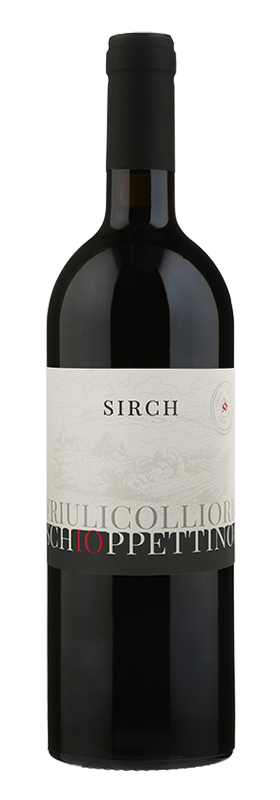SCHIOPPETTINO DI PREPOTTO
A “harmoniously explosive” wine, indissolubly linked to its land of origin: Prepotto.
Here, climate, soil and local culture have given life to a real terroir.
A “harmoniously explosive” wine, indissolubly linked to its land of origin: Prepotto.
Here, climate, soil and local culture have given life to a real terroir.

Schioppettino di Prepotto, also known in the past as Ribolla nera or Pocalza, was born – or rather reborn – from a discovery and subsequent vision and insurrection.
Its rediscovery is due to Mario Soldati who, in 1970, wandering around our region, discovered Schioppettino and dedicated it a chapter of “Vino al vino” entitled “Unknown virtue of a harmoniously explosive uniqueness”. “Schioppettino is a very rare wine,” he wrote. “It is pressed, with grapes of its variety, only in Albana di Prepotto on the banks of the Judrio river. Red with brown reflections. Full-bodied and harmonious. Just the right bitterness. But no herbaceous taste, a great wine, with a grace all its own. (...) Everything around it (...) is magically in tune with the aromas, the taste, the rarity of Schioppettino: an unblemished loner.”
It was the far-sighted Walter Filiputti, oenologist and now journalist and author, who in the 1977 vintage chose to ennoble this wine with its important and almost forgotten historical past. He proposed a vinification based on the Burgundy model and ageing – a first for an autochthonous Friuli Venezia Giulia variety – in oak barrels. A courageous choice that achieved a well-deserved success: Schioppettino became the founder of a new way of understanding wine that aimed at elegance and its enhancement, ready to be the protagonist even in the most refined restaurants.


The insurrection was that of the citizens of the small Municipality of Prepotto, in defense of the wine symbol of their culture, against a regulation that was seriously undermining its historical value and diffusion. Schioppettino, together with Pignolo and Tazzelenghe, was not included among the authorized varieties: it was subject to uprooting and fines and was therefore destined for extinction. On 9 January 1977, the Municipality of Prepotto – at that time the only cultivation area – called an extraordinary meeting of the Provincial Council: under the enlightened leadership of Mayor Bruno Bernardo, the reasons presented by Walter Filiputti, and thanks to the efforts of the Noninos with their Risit d’aur (golden vine), it was rehabilitated on 8 March 1978 (EEC Reg. 486).



 SCHIOPPETTINO DI PREPOTTO
SCHIOPPETTINO DI PREPOTTO
Grapes
Schioppettino
Description
Gentle wine with spicy tones and an excellent aromatic length
An autochthonous grape variety par excellence, already mentioned by Rovasenda in his Ampelografia of 1877, it stands out for its class, elegance and brushstrokes of spicy aromas. So much so that it has been defined as the Pinot Noir of Friuli. In 2008, the sub-area of Schioppettino di Prepotto was established – within the Friuli Colli Orientali DOC – consecrating it as a real grand cru. An area - the Albana and Prepotto hollow – that was predominantly cultivated with vines, as can be seen from a document dating back to 1282, cited by Giuseppe SIRCH in a 1910 publication. Even in the Classification of Wines of the County of Gorizia of 1787, Albana, which was Hapsburg territory, was included in Class II: one of the best!
Organoleptic description
Color. Ruby red with slightly garnet hues.
Bouquet. Shows notes of ripe red underbrush fruits, with spicy notes of incense, black pepper and clove.
Taste. Schioppettino is a wine which makes finesse and elegance its distinctive signs. A gentle red wine and nevertheless capable of reaching an excellent complexity thanks to a precious balance between nose and taste. This is confirmed by its excellent aromatic length in the finish which recalls spicy tones.
SIRCH Sarl
VIA FORNALIS 277/1
33043 CIVIDALE DEL FRIULI (UD)
TEL: +39 0432 709835
P.Iva e C.F. 02823210303 - Note Legali
I NOSTRI PARTNERS

